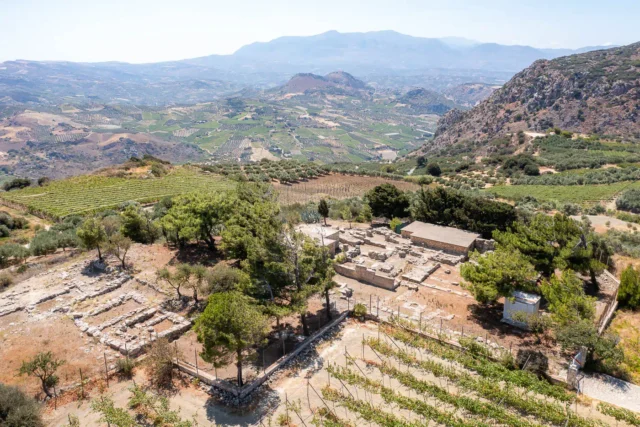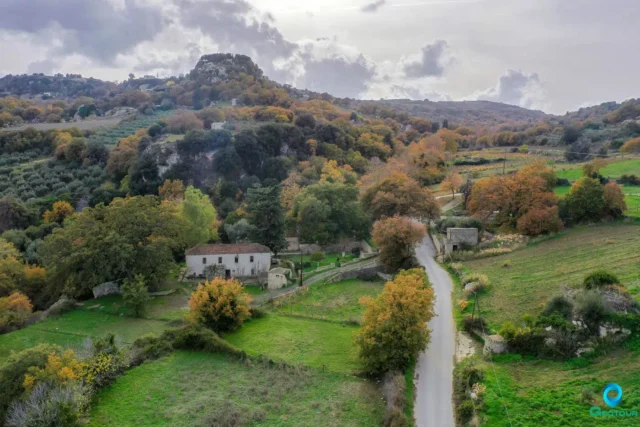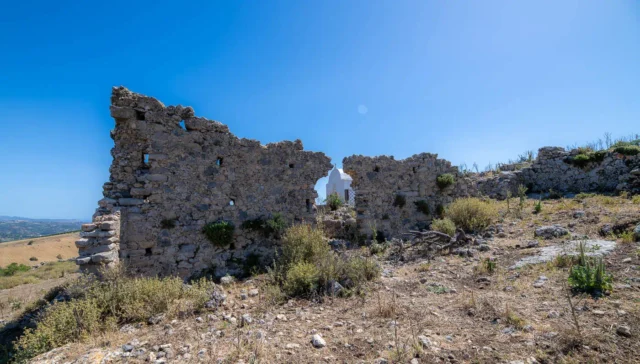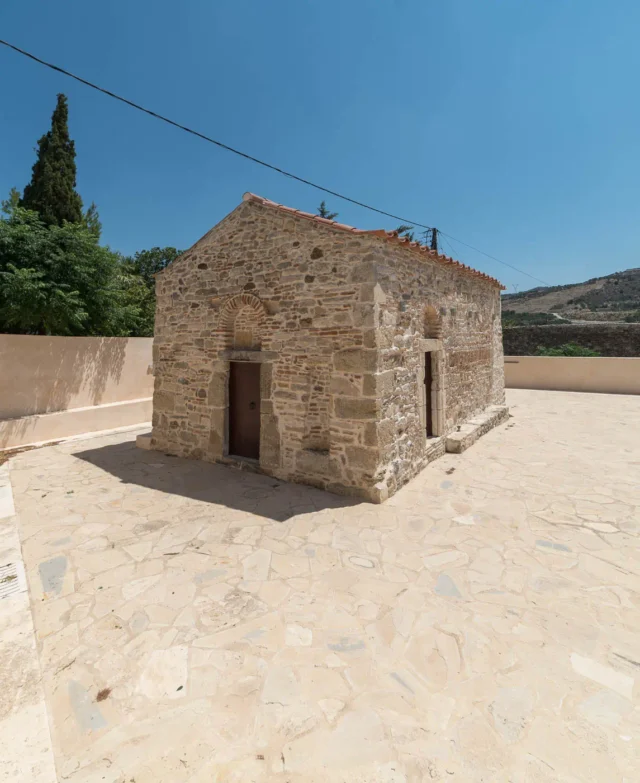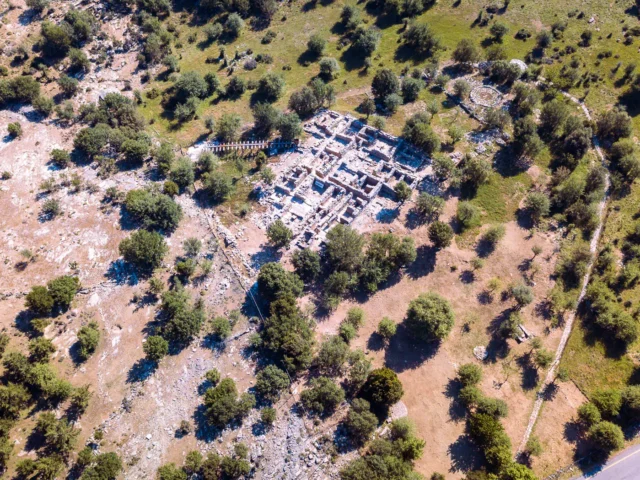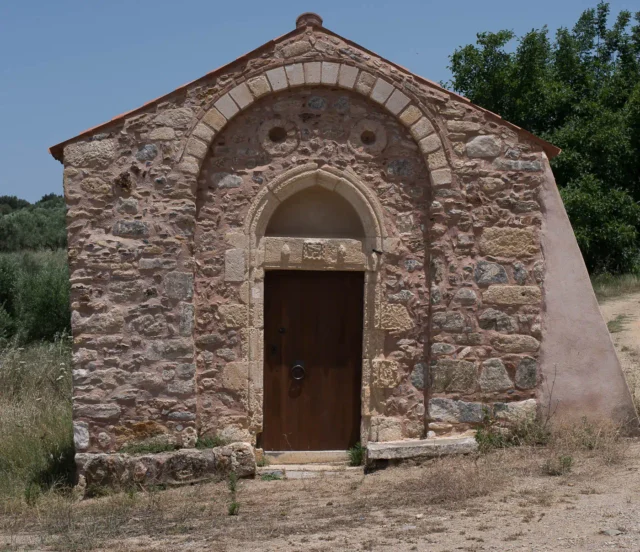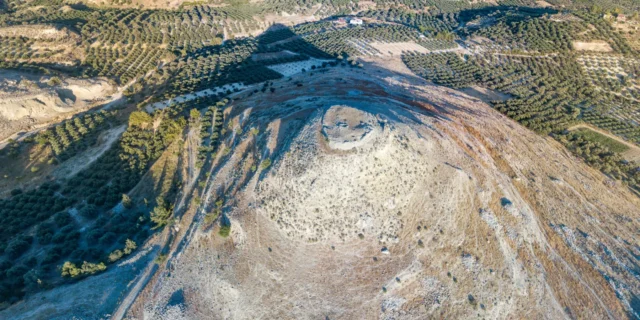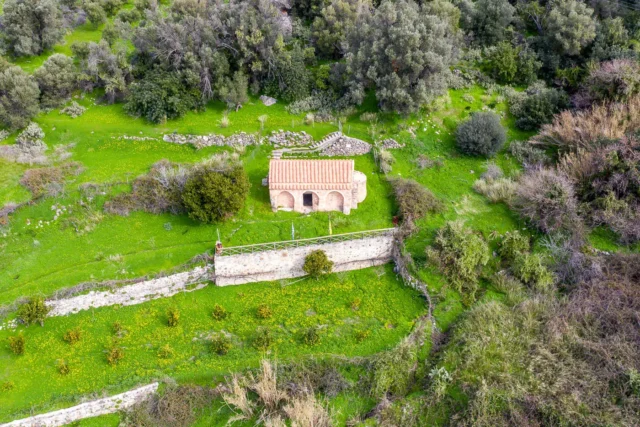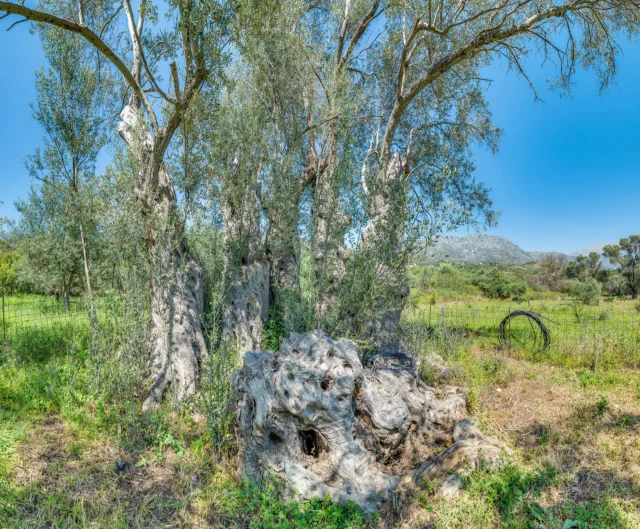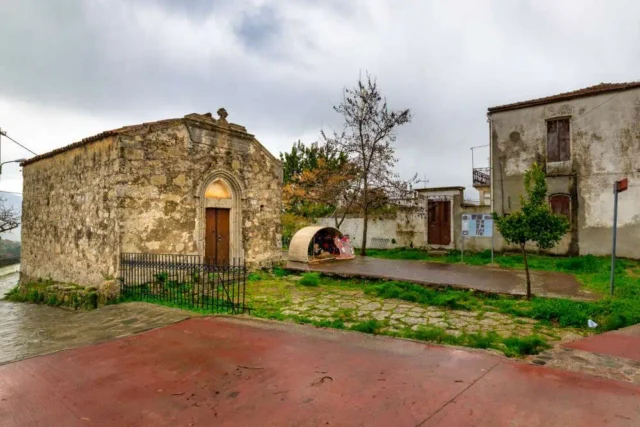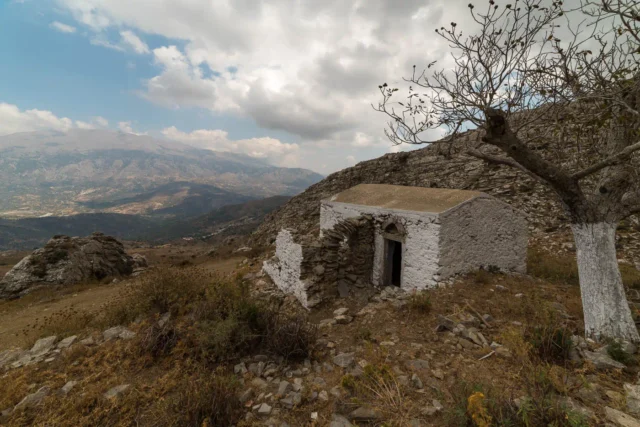748
listings found
Categories
Active filters:
Anemospilia
Anemospilia, a Minoan archaeological site on Mount Juktas in Crete, offers a unique glimpse into Minoan religious practices and beliefs. Discovered in 1979, the site features a rectangular building with four rooms, destroyed by an earthquake in the 17th century BC. The eastern chamber contains remnants of a stepped altar with offerings, fragments of pithoi with traces of food, and reconstructed vessels depicting religious ceremonies. The vestibule housed a crushed skeleton and numerous vessels. The central chamber contains a stone altar, believed to be the base of a life-sized wooden statue, with traces of vessels and a box containing a piece of rock symbolizing the earth. The western chamber contained three skeletons, including a young man found on a platform with a decorated knife, leading to interpretations of human sacrifice.
The Minoan villa at Vathypetro
The Vathypetro Minoan Villa, located near Archanes, Crete, reveals insights into elite Minoan life and economic activities during the Late Minoan IA and IB periods (1600-1425 BC).
Initially a residential complex with palatial features like reception halls and a tripartite shrine, it later evolved into an industrial hub with olive presses, workshops for pottery, wine, and textiles, and storage areas. Architectural details include pier-and-door partitions, columns, and a shrine aligned with equinoxes, suggesting ritual and agricultural connections. The villa’s strategic location on a Minoan route from Knossos to the Messara plain and evidence of Linear A documents highlight its administrative and economic significance. The site offers a glimpse into the sophisticated organization and resourcefulness of Minoan society.
Castel del Corner
The Castello del Corner, or Fortress of Kornaron, stands on Kastellos hill near Katalagari, Crete. Tradition attributes its construction to Nikephoros Phokas in 961 AD, following the Arab expulsion. During Venetian rule, it served as a fiefdom for the Corner family, linked to the famed poet Vitsentzos Kornaros. The rectangular fortress, with a 5.5-meter high wall, spans approximately 50 acres, and features Minoan-era wine presses and the church of Zoodochos Pigi. Ruins include wall remnants and possible cisterns, reflecting its role in Malvasia wine production. Restoration efforts have stabilized parts of the perimeter wall.
Panagia Kardiotissa in Agios Thomas
Panagia Kera Kardiotissa, a 14th-century Byzantine monastery near Agios Thomas in Crete, is dedicated to the Nativity of the Virgin Mary. Located in a lush landscape at an altitude of 630 meters, the monastery is situated in a place called Mouzouras, next to the Axedianos River. The monastery once housed a miraculous icon of Panagia Kardiotissa, depicting the Virgin Mary holding Christ. The icon's origins are debated, with some attributing it to an Armenian monk named Lazarus and others to the Heraklion painter Andreas Ritzos. The icon's miraculous powers were documented as early as 1415. The monastery became a significant pilgrimage site in 1912 following a vision of the icon of Saint George. It served as a nunnery from 1935 to 1962 and sheltered residents during the German occupation. Today, the renovated site features a centuries-old oak tree, peacocks, and a workshop for traditional weaving.
Melissa Fortress
Melissa Fortress, near Agios Thomas, Crete, offers panoramic views of valleys. Built in the 11th century during the Byzantine Komnenian period, it controlled strategic routes. The site features a central tower-like structure, perimeter walls, and the well-preserved Zoodochos Pigi chapel, possibly a former monastery. The ruins indicate a pentagonal layout, with a small settlement, Melissa, existing nearby. Historical records note its presence in Venetian and Turkish documents, though it was not utilized or maintained by the Venetians, leading to its abandonment. The ruins reveal a glimpse into Byzantine era fortifications and regional control.
Timios Stavros in Vorizia
Byzantine church near Varsamonero Monastery, Crete, with 14th-century frescoes and intricate stonework. Active place of worship with annual feast day celebrations.
Zominthos, a Minoan Mountain Enclave
Zominthos, a Minoan settlement at 1200 meters on Mount Psiloritis, features a 1600+ square meter central building with over 50 rooms, showcasing Minoan architecture and craftsmanship. Excavations reveal workshops for pottery, stone carving, and potential metallurgy, alongside residential quarters and fresco-adorned spaces. Artifacts, including bronze figurines and ritual vessels, provide insights into Minoan daily life and religious practices. The site's strategic location along mountain paths links it to key destinations like the Idaean Cave, indicating secular and religious importance. Mycenaean presence confirms continued significance post-Minoan era. Ongoing research uses modern technologies to uncover the site's complex details, challenging the notion of a solely coastal Minoan civilization.
Castel Nuovo (Kasteli Messara)
Castel Nuovo, a 1206 Genoese fortress, stands in ruins on Psilo Kasteli, near Phaistos, Crete. Constructed by Enrico Pescatore, its strategic hill location offered views of Messara. Built on the ancient Aina site, it played a role in Cretan revolts against Venetian rule, including the Two Syvritos (1230-1236) and Kallergis (1363-1367) revolts. The fortress, also briefly reoccupied during the Cretan War (1645-1669), is the namesake of Kainourgiou province. Today, wall and cistern remnants mark the historical landmark, offering insights into Venetian-era Crete.
Katharo plateau
Situated in the Dikti mountain range of Lasithi, Crete, 26km from Agios Nikolaos, this plateau rests at 1150m altitude. Its waters flow via the Havgas Gorge to the Lasithi Plateau. Human activity dates back to the Minoan era. Ownership was historically disputed between Lasithi and Kritsa residents, eventually awarded to Kritsa after legal battles documented in Greek and Turkish archives; a legend involves a Turkish judge and the site "Kadi's Pit". Today, it's primarily used for cultivating potatoes, apples, and vineyards by Kritsa residents who lease the land. Access is via paved road from Kritsa through an oak forest, or dirt roads from Lasithi Plateau and Malles Ierapetras; the E4 trail also passes through. Points of interest include the Avdeliakos settlement, the Chapel of Afentis Christos, and Kadi's Pit. The area offers cool summer temperatures, hiking opportunities, and hosts the annual Shepherd's Festival after August 15th.
Agios Georgios Xifoforos
Agios Georgios Xifoforos, a mid-13th-century Byzantine church located near Apodoulou in Crete's Amari region, boasts well-preserved frescoes and a single-aisled, barrel-vaulted architecture. Dedicated to Saint George (Xifoforos), the church exemplifies Byzantine art and religious traditions. Its frescoes offer valuable insights into the cultural and artistic practices of the era. The church's history, potentially linked to a monastery, remains partially unclear. Today, it serves as a place of worship and pilgrimage, open to visitors interested in Byzantine architecture and religious art.
Ancient Syvritos
Ancient Syvritos, located on Thronos Kefala hill, dates from the Late Minoan III period to the early Venetian era. It was a significant Cretan city-state, known in Linear B tablets as "su-ki-ri-ta," with its own currency and territory spanning the Amari valley to Soulia port (Agia Galini). The city, a bishopric by 451 AD, features ruins of an acropolis, houses with mosaics, and water infrastructure. Artifacts, including coins depicting Dionysus and Zeus, are housed in the Rethymno Archaeological Museum, reflecting Syvritos's role in Minoan, Geometric, Archaic, Classical, Hellenistic, Roman, and Byzantine periods. The city declined by the late 8th century, leaving ruins that offer insight into Crete's history.
Panagia of Thronos
The Church of Panagia in Thronos, Crete, a single-nave Byzantine structure from around 1300 AD, stands on a 5th-6th century Early Christian basilica. Its interior features 14th-15th century frescoes and the Kallergis family coat of arms, reflecting Byzantine patronage. The church's location on Kephala hill, ancient Syvritos, highlights its strategic importance, controlling access to Phaistos and Gortyna. Thronos itself, with roots in the Late Minoan period, was a significant Roman and Byzantine center, serving as the seat of the Bishopric of Syvritos. The church remains active and open to visitors, showcasing well-preserved artistic and historical elements.
Agia Marina Kalogerou
Located in Kalogeros, Rethymno, Crete, the 14th-century Agia Marina Church is a Byzantine structure built in 1300 AD, evidenced by an inscription. It houses a rich collection of frescoes depicting scenes from the life of the Virgin Mary, the Christological cycle, the Pantocrator, and numerous saints. The church's interior frescoes, notable for their vibrant colors and carved haloes, have undergone restoration by the Ephorate of Byzantine Antiquities, though some deterioration persists. The exterior remains unrestored, covered in plaster and whitewash. Situated within the village cemetery, Agia Marina offers insights into the artistic and religious traditions of the Amari region during the Byzantine era, and its artistic style suggests connections to other regional churches. The village of Kalogeros, known for its traditional architecture, celebrates Saint Athanasios and Cyril on January 18th.
Agioi Theodoroi church in Amari
The Agioi Theodoroi Church, located in Nefs Amari, Crete, is a small, single-aisled structure with a tiled roof. Its construction date is unknown, but frescoes dated 1588 and 1731 indicate it predates the later date. The church features a bell tower depicting the Virgin Mary and is dedicated to Saints Theodore of Tyro and Theodore Stratelates, celebrated on the first Saturday of Lent. While the church remains standing, the frescoes are in a state of disrepair.










